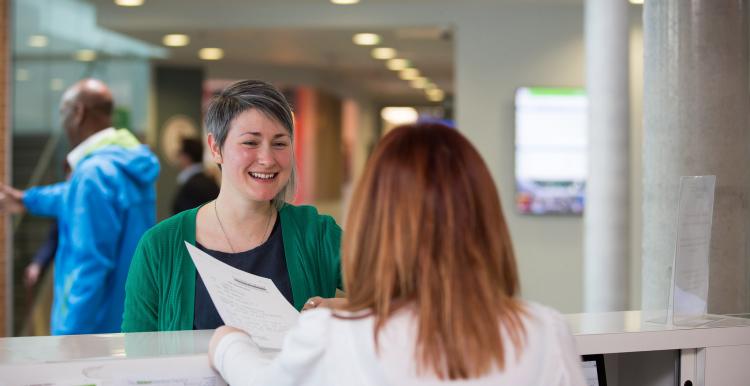Six ways health services can improve waiting rooms

Nearly a third of patients routinely spend more than 15 minutes in the waiting room after the time their GP appointment should have started, and this is usually much longer in A&E.
People often tell their local Healthwatch that waiting rooms can be stressful, but setting clear expectations beforehand about what they should expect can make a big difference. In Brighton and Hove, patients praised services which used screens and announcements to call people to be seen, as well as explaining expected waiting times.
Here are six simple steps that services can take to provide a better environment for patients.
1. People are nervous, so be sympathetic
Patients can arrive feeling quite anxious, so staff should be aware of how their initial interactions can affect people’s moods and their confidence to speak openly, especially when it may not be obvious how well or stable an individual might be.
2. Don’t discuss personal issues in the open
Staff should also be respectful of confidential information when conversations can be overheard and lower their voice if appropriate.
I wish they had more privacy because I feel uncomfortable discussing my needs when others waiting could overhear. I don’t want to talk about my sexual health when strangers are so close.
3. Make sure people have the support they need
People with disabilities tell us that staff are not always equipped to support their needs and improved awareness would be a positive step.
For example, in Birmingham patients with limited mobility and visual impairments said that physical access was problematic, and it was hard to find their way around. While people with hearing impairments struggled to book an interpreter, the interpreter didn’t show up, or they were refused one completely.
4. Have a welcoming environment
Small changes can make a big difference to people’s experiences. For example, making sure there is enough space and comfortable seating, access to refreshments and clean toilets.
One lady arrived with her husband […] and had to wait 2 hours. It was so crowded they could not sit together. The seats were uncomfortable.
5. Keep people informed
When services are busy, it can be confusing for patients if they don’t know how long the wait will be. Our research shows that what shapes people’s experiences of A&E is often not how long they wait, but the quality of care they receive and how that care is delivered.
It helps if people are told how long they should expect to wait before they attend a service and are given regular updates once they arrive.
6. Engage patients in the waiting room
While people are waiting for their turn, display boards can help provide information, advice lines and online support for a wide range of topics, such as mental health. It’s also the perfect opportunity to ask for feedback on what’s working well and things that can be improved.
Share your experience
How was your wait for an appointment? If you would like to share your views and experiences, both good and bad, get in touch with us.